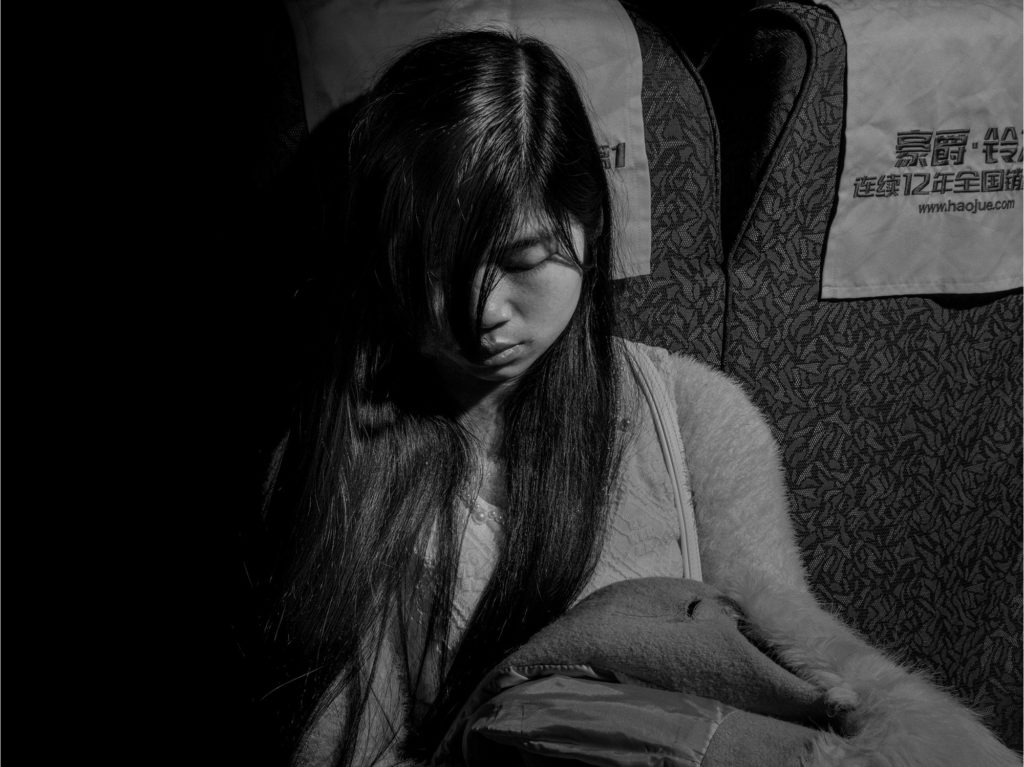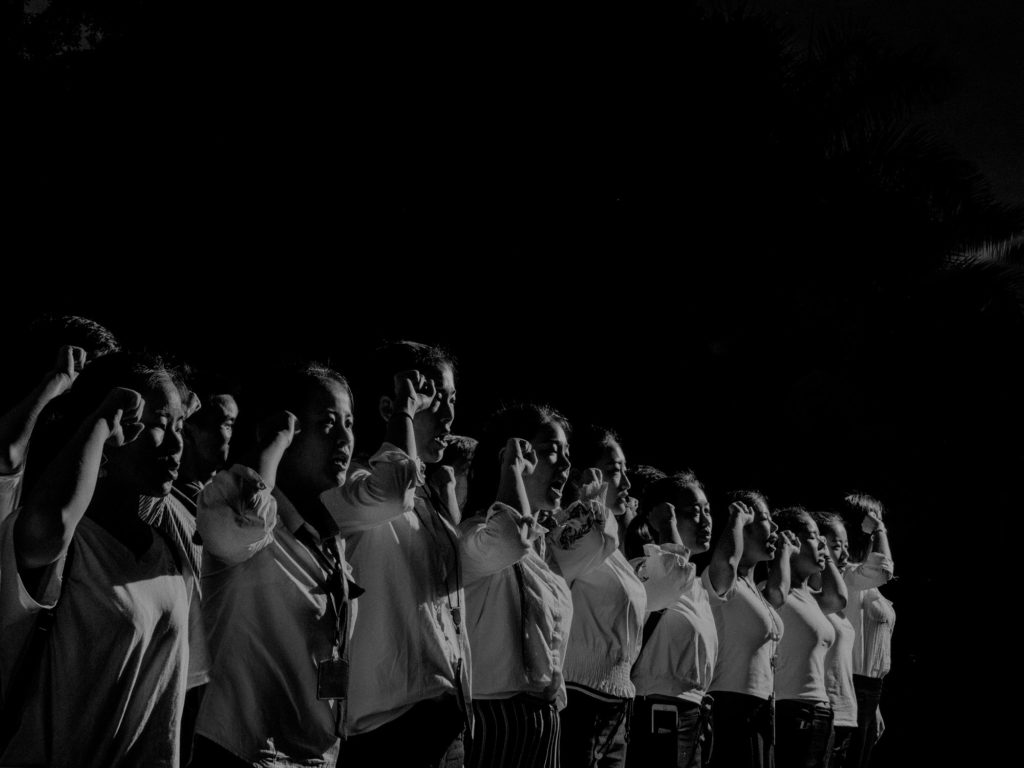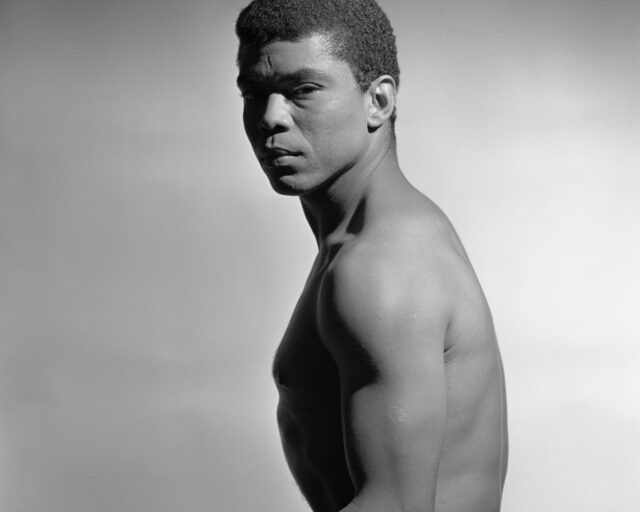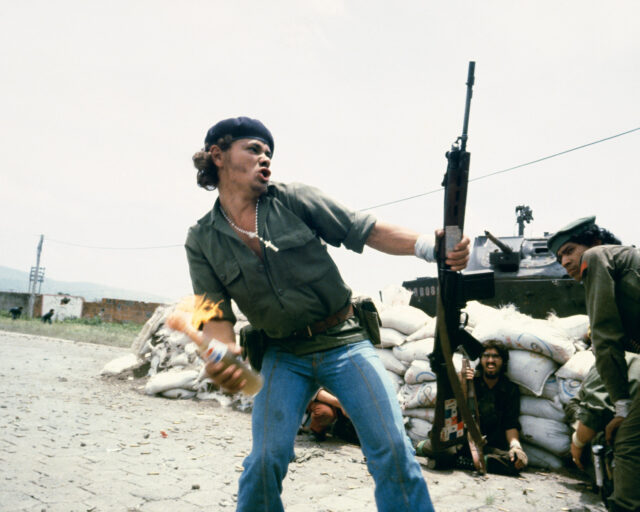For Alex Majoli, Photojournalism and Performance are Inseparable
The photographer’s psychological portraits cast a unifying light around the world.
Alex Majoli, Scene #8667, London, 2017
Europe, Asia, Brazil, Congo. For eight years, across continents and countries, Alex Majoli has photographed events and nonevents. Political demonstrations, humanitarian emergencies, and quiet moments of daily life. What holds these disparate images together, at first glance at least, is the quality of light and the sense of human theater. A sense that we are all actors attempting, failing, and resisting the playing of parts that history and circumstance demand; and a sense that we are all interconnected. Somehow.

© the artist/Magnum Photos
Majoli’s photographs result from his own performance. Entering a situation, he and his assistants slowly go about setting up a camera and flash lights. This activity is a kind of spectacle in itself, observed by those who may eventually be photographed. Majoli begins to shoot, offering no direction to people who happen to be before his camera. This might last twenty minutes, or even an hour. Sometimes the people adjust their actions in anticipation of an image to come. Sometimes they are too preoccupied with the intensity of their own lives to even notice.
Majoli uses very strong flash lighting. It is instantaneous and much brighter than daylight. It illuminates what is near but plunges the surroundings into darkness, or something resembling moonlight. Spaces appear as dimly lit stages and, regardless of the ambient light that existed, everything seems to be happening at the sunless end of the day. Just when the world should be preparing to sleep, it offers a heightened performance of itself.

© the artist/Magnum Photos
The term “theater” implies a stage; a stage implies an audience; an audience implies performance; and performance implies artifice. Photography has always had fraught relations with all these concepts. This is because it is a medium that can be used with minimal preparation or intervention. It can set itself apart from the world it depicts, or at least fool itself it can, and this was for a long time enshrined as the protocol for realist reportage photography. In order to be true and authentic, a reportage photographer had to be present in the world but without interference. It was an aspiration at once noble and impossible, of course.

Alex Majoli’s approach to image making constitutes a profound reflection upon the conditions of theatricality that are implicit in both photography and a world we have come to understand as something that is always potentially photographable. If the world is expecting to be photographed, it exists in a constant state of potential theater. Whether it is a surveillance camera, a smartphone camera, or a photojournalist’s lens, the omnipresence of photography has created a heightened state of camera-consciousness. Even when this consciousness does not affect those in front of the camera, it affects those looking at the resulting images. In photographs we do not see people, we see people who have fulfilled their potential to be photographed, to become light, with all the inevitable theatrical transformations this can entail. This does not negate the documentary potential of the image, although it does imply that documentary itself ought to accept the theatricality of its own premise.

© the artist/Magnum Photos
Majoli accepts this newly complex condition, responds to it and reflects upon it. And from this perspective it is perfectly understandable that the points of departure for his project come from experimental theater, and in particular Luigi Pirandello’s Six Characters in Search of an Author, first performed in 1921. Its “plot” concerns a theater director, and actors who, while rehearsing their play, are interrupted by strangers. The presence of these strangers, with their complicated relationships and difficult histories, forces the director to rewrite the play in order to accommodate them. The layers of theatricality build up, and the audience has to adjust constantly. But the play would be little more than an empty game about theater, were it not for the fact that Pirandello has deep moral questions to pose to the audience. What is our relation to the demands of strangers? What adjustments are we obliged to make? How do we reset the “plot” of our life, our society?

© the artist/Magnum Photos
Is there a correct position from which to grasp Alex Majoli’s proposition? Are we to suspend any documentary claim and engage with these pictures as fictions, like film stills or theater publicity photographs? Are we to understand these images as psychological portraits of people and circumstances, made by a photographer concerned with some higher truth relating to the contradictory promise of a new global consciousness? Would this global consciousness be the ghostly return of the humanist promise of universal rights and values, asserted in the face of shameful and catastrophic inequality? Perhaps these are not so much ways to read Majoli’s photographs than questions to think about while looking at them.
This piece is adapted from Alex Majoli: Scene (MACK/Le Bal, 2019). Alex Majoli: Scene is on view at Le Bal, Paris, from February 22 to April 28, 2019.

























